Controlling Backgrounds In Macro Photography
April 14, 2015 by Timothy Cooper
As with most forms of photography, macro imagery benefits from having a strong main subject; a subject that stands out and keeps the attention of the viewer. One approach to strengthening your main subject is by ensuring that you background does not compete with it.
I consider the background to be the most important part of my macro imagery. It is the most difficult area to control and can make or break an otherwise strong main subject. By subduing our backgrounds we keep the main subject free from visual competition.
So what causes this visual competition? Simply put, areas of interest. As our eyes move across a photograph, they are drawn to certain areas of interest first. I call these locations Attractions and Distractions. Bright areas, contrasty areas and areas of sharpness all draw the eye.
Logic would dictate, then, that an effective photo consists of a main subject that is bright, contrasty, and sharp, while our backgrounds are kept dark, low in contrast, and out of focus.
This, of course, is impossible to do in every situation, but keeping these ideas in mind can help us better design our compositions.
Here are a few tips that will help you better control and subdue your backgrounds.
USE A LONGER LENS
Macro lenses typically come in three different focal length ranges: 50mm, 100mm and 180mm. The longer the lens, the more narrow the field of view. A narrow field of view shows less of the background. It is much easier to control the background when you are seeing less of it. The following illustrations demonstrate how much more background is visible with a 50mm lens as opposed to a 180mm macro lens when the main subject remains the same size.
50 mm macro lens
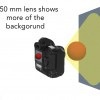
180 mm macro lens
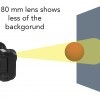
In the following pair of images you can see how I have kept the main subject nearly the same while the backgrounds are completely different. Using a 180mm lens, I only needed to move my camera about 3 inches to achieve this. 
WATCH FOR BRIGHT AREAS IN THE BACKGROUND
Carefully examine the scene for random bright areas in the background. These distractions really draw your eyes away from the main subject.

KEEP YOUR BACKGROUND LOW IN CONTRAST A low contrast background tends to be less competitive with your main subject. The easiest way to achieve this is by keeping your main subject sharp and your background out of focus. When the background is out of focus, the bright and dark areas blend together to create a lower contrast as you can see in the examples below.
There are three ways to keep your background out of focus.
1. The first is by using a larger fstop. The frame on the left was shot at f22 resulting in a very sharp background. The frame on the right was shot at f4. This lets the background elements blur together giving lower contrast. 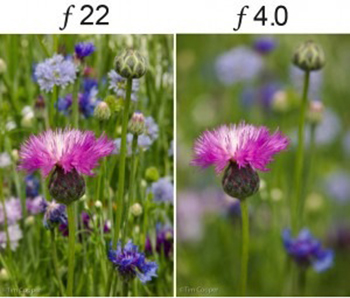
2. The second way is to keep your main subject as far as possible from your background. In this first image the leaves behind the flower are about 6 inches behind the main subject. This will be difficult to really blur. In the next shot, I found a similar flower where the background was about 3 feet behind. You can see the background is much more pleasant in the second image.
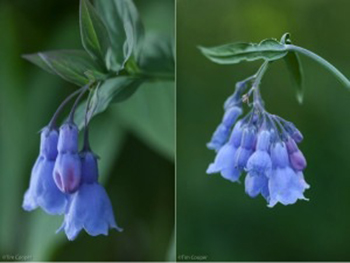
3. The last way is to get closer to your main subject. The images below demonstrate that the closer you get, the less depth of field you will have.
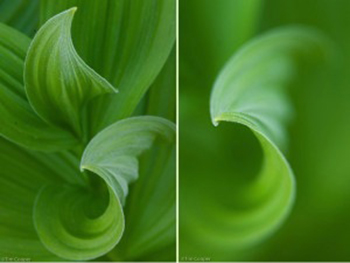
Controlling your background takes practice and patience, but give it a try and experiment a little. Try longer lenses, getting closer to your subject and using wider apertures. I think you will find these little tricks do a lot to make your macro photographs far more appealing!
